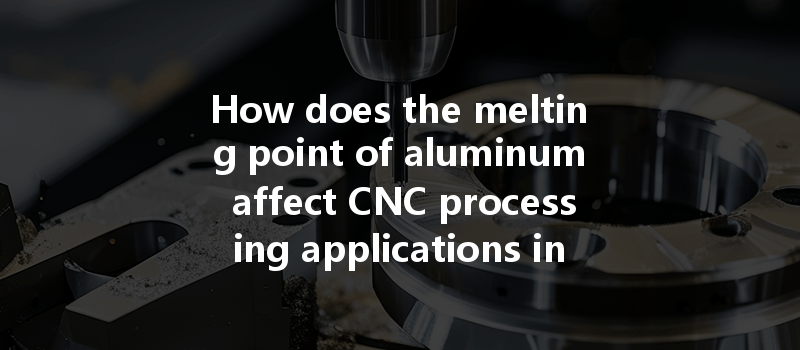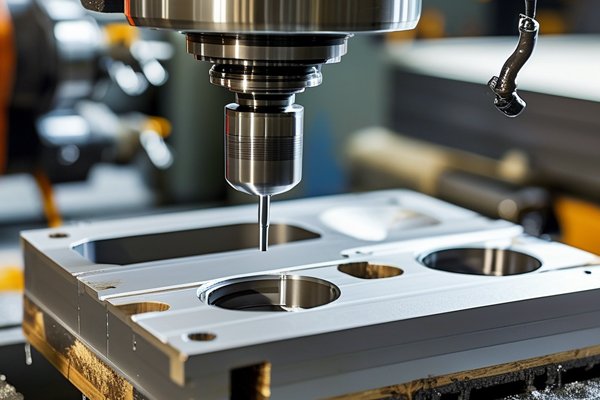Did you know that aluminum is one of the most widely used metals in the aerospace industry? In fact, approximately 75% of the total mass of a commercial aircraft is made from aluminum and its alloys. This statistic is not just a testament to aluminum’s lightweight properties but also to its adaptability and performance under varying conditions. One crucial aspect that significantly influences the usability of aluminum in aerospace applications is its melting point, which can greatly affect CNC (Computer Numerical Control) processing.
In this blog, we will explore how the melting point of aluminum impacts CNC processing in the aerospace sector. We will delve into various factors that affect melting point, examine the implications for machining processes, and offer strategies for overcoming challenges posed by the properties of aluminum.
The Melting Point of Aluminum: A Fundamental Understanding
Before we dive into its applications in CNC processing, it’s essential to understand what the melting point signifies. Aluminum has a melting point ranging from approximately 660 °C to 670 °C (about 1,220 °F to 1,238 °F) depending on its alloy composition. The melting point is the temperature at which a solid becomes a liquid, a fundamental process not only in manufacturing but also in defining the material’s mechanical properties.
While aluminum alloys like 2024 and 6061 are prevalent in the aerospace sector, each alloy has a unique melting point that affects its machinability. The combination of physical and thermal properties of these materials requires an adept understanding of how to process them effectively, particularly in high-stakes applications like aerospace engineering.
The Importance of CNC Processing in Aerospace
CNC processing plays a vital role in the aerospace industry by enabling the precise fabrication of complex components. Unlike traditional machining methods, CNC processing automates and oversees the machining process through coded instructions, allowing for high precision and minimal human error. It’s not only about creating parts but about producing critically important components that meet strict industry standards for safety and durability.
In this highly regulated industry, even the slightest variation in material properties could have catastrophic results. Hence, understanding how the melting point of aluminum impacts CNC processes is essential for engineers and manufacturers alike.
Factors Affecting the Melting Point of Aluminum
Several factors can influence the melting point, notwithstanding the alloy composition. Understanding these factors aids in making the correct choices during processes like CNC machining:
How Melting Point Affects CNC Processing in Aerospace
Choosing the right alloy for a specific CNC application begins with understanding the melting point and material properties. For machined parts requiring intricate designs and tolerances, engineers must select alloys that can withstand not only the heat of CNC processing but also subsequent operational environments such as extreme temperatures and mechanical stress.
Aluminum’s melting point heavily influences the choice of tooling and machining conditions. When CNC machining aluminum, temperature can rise due to friction and cutting forces. If not managed properly, this can lead to:
Proper cooling and lubrication during CNC processing are critical to counteracting heat generated during machining. Strategies include:
The choice of tooling setup is pivotal when CNC processing aluminum:
Challenges in CNC Machining Aluminum in Aerospace Applications

CNC processing of aluminum in aerospace doesn’t come without its challenges. Understanding these can help mitigate risks:
Aluminum parts may distort due to differential thermal expansion. To reduce this risk, consider factors such as:
A phenomenon known as “burn-out” occurs when cutting temperatures exceed the threshold of the aluminum alloy, affecting integrity and causing defects:
Managing material waste is crucial in aerospace applications due to the high costs associated with aluminum. To minimize scrap:
Aerospace components must meet rigorous safety and performance standards:
Promoting Efficiency in CNC Machining Aluminum
In aerospace, efficiency and effectiveness are paramount. Here are techniques to enhance performance while machining aluminum:
Investing in advanced CNC machines equipped with features like adaptive feed rate control and integrated cooling systems could lead to improved precision and productivity.
Implementing stringent quality control measures throughout the machining process ensures that every component adheres to safety standards.
A skilled workforce is essential. Regular training on new technologies, materials, and processes will empower employees and enhance overall operational efficiency.
It’s crucial for companies to collaborate with CNC machining partners who understand the aerospace industry’s unique requirements and can provide insights into materials and machining processes.
In summary, the melting point of aluminum plays a significant role in CNC processing for aerospace applications. From selecting the right alloy to optimizing machining conditions and ensuring quality, understanding the intricate relationship between aluminum’s thermal properties and CNC processing is vital.
As the aerospace industry evolves with a focus on weight reduction, fuel efficiency, and advanced materials, learning how to effectively harness the properties of aluminum will continue to be paramount.
By addressing these factors, engineers and manufacturers can create high-quality components that meet stringent aerospace requirements while simultaneously driving innovation and reducing waste. As we look to the future, understanding these nuances in aluminum processing will become increasingly essential in maintaining safety, efficiency, and technological progress in aviation.
Takeaway: Engaging with the fundamentals of aluminum properties and CNC processes not only enhances machining capabilities but also promotes a culture of continuous improvement in the aerospace industry.



